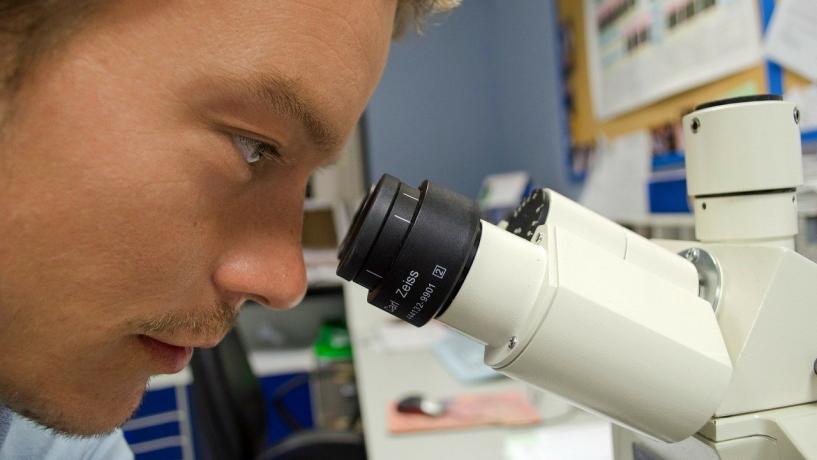
Salmonella is a bacteria that has been responsible for many food-borne illnesses throughout Australia, especially within the past few years. Food-borne illness due to Salmonella is not only an uncomfortable and distressing experience, it can be deadly. Scientists and researchers have been working on ways to identify and reduce the risk of Salmonella infections in Australia. Recently, major advancements have been made that will help with identifying and detecting Salmonella, as well as preventing it in the first place.
Researchers create DNA tests that identify Salmonella variations
Scientists at the University of New South Wales (UNSW) have developed a DNA test that is able to identify the most common variations of Salmonella found in Australia. In particular, there are five common types that account for 85% of Salmonella infections in Australia; these variations are: Typhimurium, Enteritidis, Virchow, Saintpaul, and Infantis.
The tests are able to detect tiny amounts of Salmonella at a rapid pace — in fact, they can detect as few as 10 copies of DNA in eight minutes. They use a technique called multiple cross-displacement amplification, or MCDA. This method has been enhanced in the new tests, which can now distinguish different types of Salmonella — which the existing method does not do.
The ability to detect variations of Salmonella is groundbreaking. Science doctoral candidate Xiaomei Zhang states that “It’s important to be able to detect the different serotypes because some are more likely to be associated with local infections while others are more likely to be associated with imported cases.” Health authorities can benefit from knowing if a food-borne illness outbreak is due to a local variation of Salmonella, and take the appropriate corrective actions.
According to Professor Ruiting Lan of the UNSW School of Biotechnology and Biomolecular Sciences, “It is essential for public health investigators to have a fast, simple way of tracking down the source of Salmonella outbreaks — so, the ability to test for different types of Salmonella is important.” Researchers hope that these new tests will help detect and identify Salmonella variations efficiently and help to reduce the occurrences of Salmonella infection in Australia.
Australian university aims to improve Salmonella vaccine
Researchers at the University of Adelaide are conducting studies on a Salmonella vaccine for livestock. The main goal of the vaccine is to reduce the risk of food-borne illness in Australia by reducing the incidence of Salmonella infections in poultry.
The University of Adelaide has been awarded the Linkage Grant by the Australian Research Council which will provide the university with AU $390,000. The grant will be used towards their research on improving the effectiveness of a Salmonella Typhimurium vaccine for poultry. Professor Anton Middelberg of the Australian Research Council has applauded “the diversity of the University of Adelaide’s research expertise and its alignment with our industry priorities.”
The project is led by Kapil Chousalkar, who is an associate professor from the School of Animal and Veterinary Sciences. The researchers on the project include the University of Adelaide’s Dr. Andrea McWhorter; RMIT scientists; a Melbourne public research university; novel vaccine research company Bioproperties Pty Ltd; and the U.S. Department of Agriculture (USDA).
Why is poultry a concern?
Eggs from poultry are one of the top five high-risk foods that can cause food poisoning. They are easily contaminated with Salmonella which is found in many places around farms. Eggs have been linked to many high-profile food-borne illness outbreaks of Salmonella; most notably, there have been outbreaks of new and rare strains of Salmonella in Australian eggs, which has caused concern among governments and farmers alike.
Up until recently, eggs were only found to be contaminated with Salmonella on the outside of the shell, but the new strain of Salmonella enteritidis can enter and infect the yolks. Seemingly healthy chickens are laying infected eggs, and those eggs produce chickens that go on to lay infected eggs themselves. This has created a vicious cycle that researchers are hoping to slow down with a vaccine.
Proper food handling of eggs is vital
The concerns about Salmonella in Australian eggs are warranted, as eggs are a commonly used by food businesses in their recipes. Eggs are used in baked goods, custards, desserts, and dressings, just to name a few. Any time that eggs are used in a recipe, there is a risk of a Food Handler contracting Salmonella through touching the raw eggs while preparing the food. There is also the risk of a customer contracting Salmonella through consuming undercooked eggs in their meal. This means that it is essential for food businesses and Food Handlers to do their part to ensure food safety.
While an efficient Salmonella vaccine may be a while off, food businesses and Food Handlers can continue to follow proper food safety protocols, including the proper way to prepare, cook and store high-risk foods such as eggs. Food Handlers should also be up-to-date on their nationally recognised food safety training in order to ensure proper food handling and food safety within a business.




